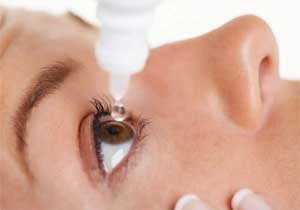- Home
- Editorial
- News
- Practice Guidelines
- Anesthesiology Guidelines
- Cancer Guidelines
- Cardiac Sciences Guidelines
- Critical Care Guidelines
- Dentistry Guidelines
- Dermatology Guidelines
- Diabetes and Endo Guidelines
- Diagnostics Guidelines
- ENT Guidelines
- Featured Practice Guidelines
- Gastroenterology Guidelines
- Geriatrics Guidelines
- Medicine Guidelines
- Nephrology Guidelines
- Neurosciences Guidelines
- Obs and Gynae Guidelines
- Ophthalmology Guidelines
- Orthopaedics Guidelines
- Paediatrics Guidelines
- Psychiatry Guidelines
- Pulmonology Guidelines
- Radiology Guidelines
- Surgery Guidelines
- Urology Guidelines
Isotonic glycerol and sodium hyaluronate drops improve dry eye symptoms in Sjögren's syndrome

Budapest, Hungary: Three-month treatment with an eye drop containing isotonic glycerol and 0.015% sodium hyaluronate significantly improved symptoms of the Sjögren's syndrome-related dry eye but did not significantly improve the basal tear secretion, according to a recent study published in the journal EC Ophthalmology. This was achieved without any use of the traditional anti-inflammatory agents.
Sjögren Syndrome also called pSS is an auto-immune disorder that affects the moisture glands of the body, especially eye and mouth. The condition often accompanies other immune system disorders, such as rheumatoid arthritis and lupus. In Sjogren’s syndrome, the mucous membranes and moisture-secreting glands of your eyes and mouth are usually affected first — resulting in decreased tears and saliva. Dry eye and dry mouth are the leading symptoms. The Sjögren’s syndrome may cause serious aqueous-deficient dry eye, as the lacrimal glands are affected.
The researchers had reported earlier that the investigated study drug, containing isotonic glycerol and sodium hyaluronate, had decreased chronic inflammation causing conjunctivochalasis and had reduced eye surface staining.
This study by János Németh, Department of Ophthalmology, Semmelweis University, Budapest, Hungary, and colleagues demonstrated whether the same monotherapy was effective to reduce the subjective and the objective signs of dry eye among the Sjögren’s patients with a significant change in the primary endpoint, the decrease in the eye surface staining without the use of any anti-inflammatory agents.
For the purpose, the researchers enrolled twenty-one adult patients, 18 women and three men, with a mean age of 60.4 years.
The inclusion criteria were: : lid parallel conjunctival folds (LIPCOF) at least grade 1, lissamine green staining attaining at least grade 1, higher on the Oxford Scheme grade, decreased basal tear secretion with topical anaesthesia of 5 mm/minute or less, moderate or severe subjective symptoms with an Ocular Surface Disease Index (OSDI) score of at least 23, and former diagnosis of Sjögren’s disease.
Twenty-one adult patients, 18 women and three men, with a mean age of 60.4 years, were enrolled.
None of the patients received general prolonged immunomodulation therapy.
Patients were instructed to apply the Conheal eye drops (Pannonpharma Ltd., Pecsvarad, Hungary), which contain isotonic glycerol and 0.015% hyaluronic acid in purified water, on both eyes four times a day for 3 months. Follow-up occurred at 1 and 3 months.
Also Read: Low estrogen and fewer menstruating years linked to Sjögren Syndrome in women
Key findings of the study include:
- The three-month-long use of the study drug resulted in a significant decrease of the LIPCOF degree from an initial value of 2.48 ±0.75 on the right eyes and 2.57 ± 0.75 on the left eyes to 1.33 ± 0.73 and 1.38 ± 0.67, respectively.
- The initial lissamine green staining of the eye surface also decreased significantly from 1.76 ± 0.89 and 1.95 ± 0.86 to 0.29 ± 0.56 and 0.29 ± 0.56, respectively.
- There was a significant decrease in the OSDI values from 55.81 ± 15.19 to 32.54 ± 19.51.
- Basal tear secretion did not change significantly from an initial value of 1.6 ± 1.4 mm on the right and 1.7 ± 1.4 mm on the left eyes.
- The researchers report no adverse reactions, and patient compliance was high throughout the entire study.
Also Read: Patients of Sjogren’s syndrome have increased CV risk
According to the researchers, a decrease in human leukocyte antigen-DR (HLA-DR) expression induced by isotonic glycerol may be responsible for this favourable effect.

Disclaimer: This site is primarily intended for healthcare professionals. Any content/information on this website does not replace the advice of medical and/or health professionals and should not be construed as medical/diagnostic advice/endorsement or prescription. Use of this site is subject to our terms of use, privacy policy, advertisement policy. © 2020 Minerva Medical Treatment Pvt Ltd